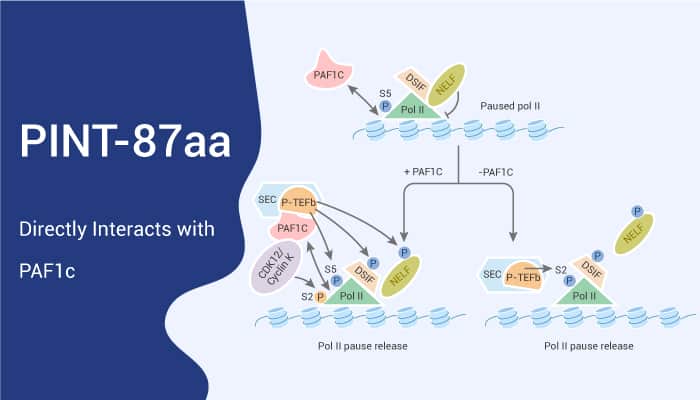Circular RNAs (circRNAs) are a large class of transcripts in the mammalian genome. CircRNAs are inherently resistant to exonuclease activity (resulting in higher stability than linear RNAs) and often show tissue- or developmental stage-specific expression. It suggests that they possess important biological functions. To date, circRNAs can act as microRNA sponges, to respond to and regulate neuronal synaptic function, and to manipulate gene transcription in the nucleus. In this study, PINT87aa is an 87-amino acid (aa) peptide encoded by the circular form but not linear LINC-PINT. PINT87aa partially controls the cell proliferation and tumorigenesis of cancer cells. Upregulation of the expression of PINT87aa induces tumor-suppressive effects in vitro and in vivo. In a world, PINT87aa, a potential tumor-suppressive peptide, directly interacts with the PAF1 complex and inhibits mRNA transcriptional elongation.

Both 456 and 4121 cells overexpressing PINT-87aa exhibits G1 arrest and reduces cell proliferation without obvious cellular toxicity, whereas PINT-87aa K.O. SW1783 and Hs683 cells show increased cell cycle and cell proliferation rates. In addition, 456 and 4121 cells stably overexpressing PINT-87aa exhibits decreased in situ tumorigenic potential compared with control cells, as assessed by tumor growth and animal survival in mice. Furthermore, PINT-87aa K.O. cells result in significantly increased xenograft tumor volumes of nude mice. PINT87aa directly interacts with the PAF1 complex and inhibits mRNA transcriptional elongation.
In summary, PINT87aa is an 87-amino acid peptide and a potential tumor-suppressive peptide. It directly interacts with polymerase associated factor complex (PAF1c) and inhibits the transcriptional elongation of multiple oncogenes. In addition, PINT-87aa suppresses glioblastoma cell proliferation in vitro and in vivo.
Reference:
Zhang M, et, al. Nat Commun. 2018 Oct 26;9(1):4475.